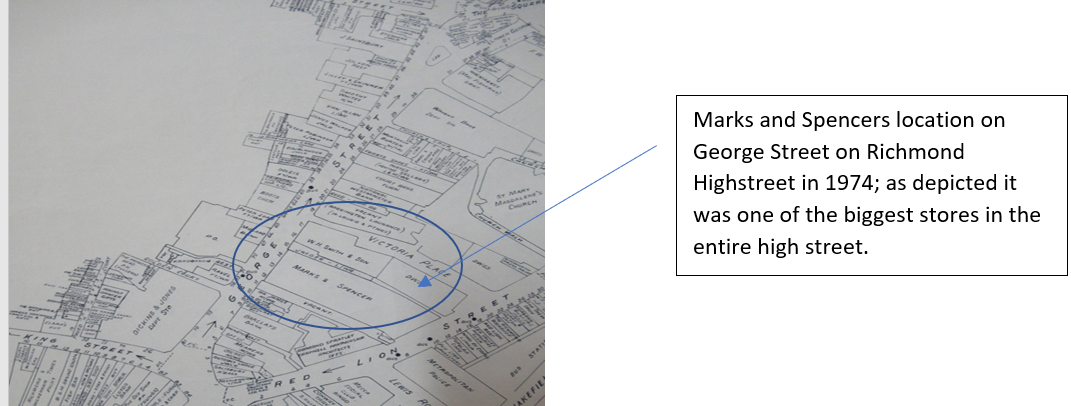The Development of Retail on Richmond High Street and the impact this had on the local area.
Richmond was an area that prospered substantially during the nineteenth and twentieth century. 1896 saw the area of Richmond wired with electricity which was the stimulus for luxurious housing being built on the streets of Richmond and caused a vast increase to the number of shops in the town centre (creating the high street) to serve the increasing affluent population. Richmond high street developed quickly into one of the largest high streets in the area. By 1974 (as seen in my street blueprints of that year [below]) there was an abundance of shops from department stores, grocery stores, pharmacies, furniture stores, a local fresh market, and many more. With such a variety of essential shops the population of Richmond Upon Thames were very dependent on the local retail, with the various changes and development to the high street over the years directly impacting many people. Richmond high street has become far busier and more developed from the high street it was in the period of the 1970s however many of the shops still remain; with the main difference being that Richmond high street is no longer just for the locals but is in fact an acclaimed high street that many people now commute to.
Wright Brothers Department store:
Brothers Alfred and Harold Wright opened a draper’s shop in 1896, located on George Street, Richmond Upon Thames. The shop later developed into the first small department store in Richmond, which became incorporated as Wright Brothers Ltd in 1929 . Hide and Co Ltd brought Wright Brothers department store in 1940 but kept the store operational in its original name. House of Frazer brought Hide and Con Ltd in 1975 but kept the Wright Brothers department store functioning until 1990 where the site was taken over by Tesco supermarket. From the two images from The Archive Photographs series of Richmond you can see how the store developed over the years, with a grander entrance being built and the store increasing in size. This is a clear representation of the story of Richmond High Street and how it was a prosperous place with a constant increase in the number of shoppers (as seen in the comparison of the number of people in the two archive pictures).
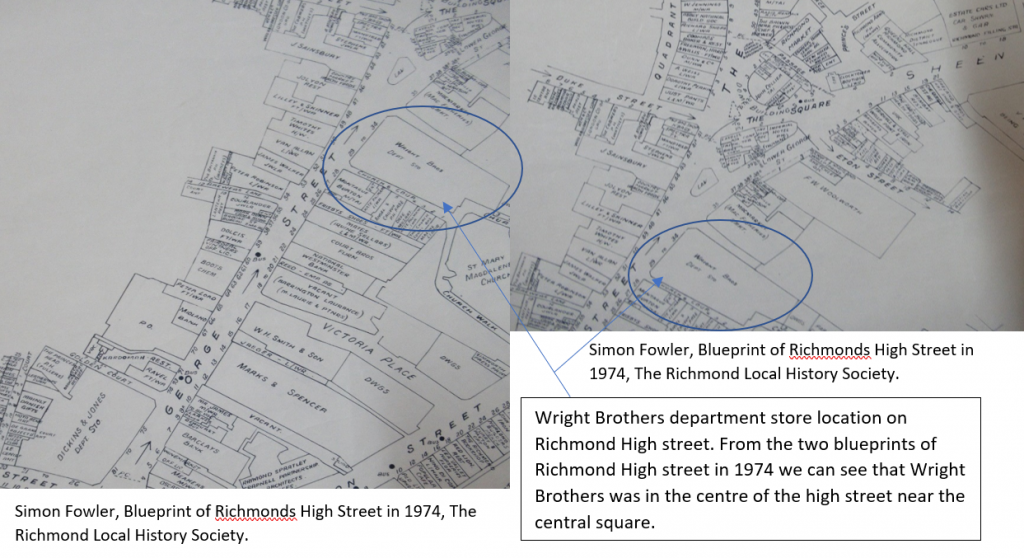
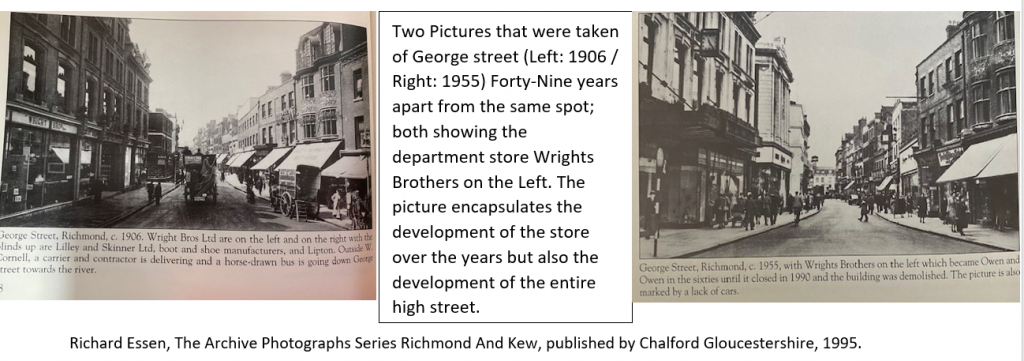

Marks and Spencer:
Marks and Spencer originally opened in 1917, however closed shortly after in 1920. On the eighth of March 1956, the Marks and Spencer reopened on George Street in Richmond. Marks and Spencer, after Wright Brothers was the next biggest and influential store to open on Richmond high street. The store frontage when it opened in 1956 was fifty-four feet with a sales area of fourteen thousand square feet. Due to the popular demand of the store opening in Richmond during this time, in September 1980, the store was further extended. There was a new first floor sales area added which resulted in the store having thirty-three thousand square feet of sales area and a frontage of ninety-two feet. In its earlier days, the Marks and Spencer’s sold sewing equipment, biscuits and other confectionaries, toys, clothes, and street music. The Marks and Spencer is still there now in 2021.
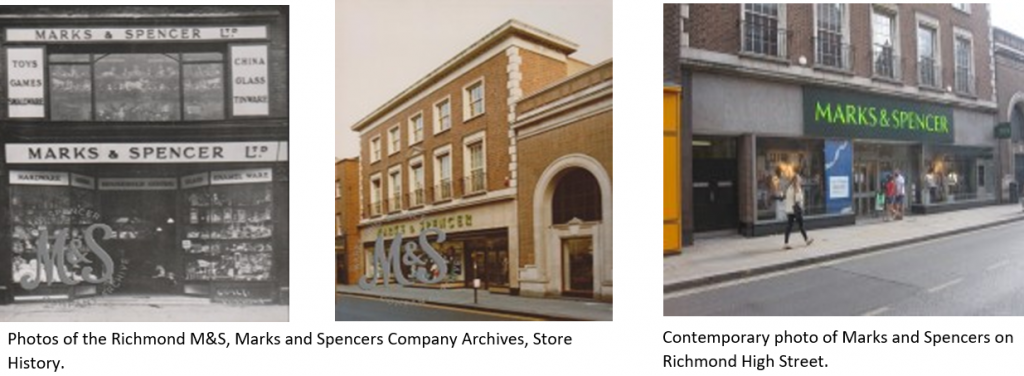
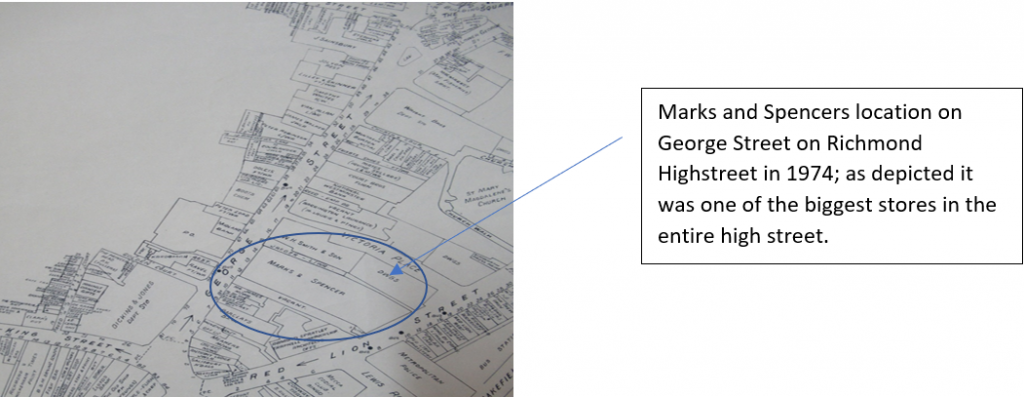
Dickens and Jones:
Located on George street, Dickens and Jones department store opened in 1969, not too long after the opening or Marks and Spencer. The opening of Dickens and Jones, along with the other two stores helped turn George street in Richmond into the important high street it was. The Department store was a five-story building and the biggest store in Richmond at the time. Due to the store’s popularity in the affluent area of Richmond, in 1975 the two basements were redeveloped to covert the lower ground area into sales floor for household goods. The Dickens and Jones department store sold high end clothes, had a coffee shop, had a fur department, a sumptuous lingerie section, and various other high-end departments. The new highly demanded basement opened in 1976, the same time the ground floor was completely refurbished. Dickens and Jones department stores were taken over by House of Fraser in 1959; however, the Richmond and Epsom stores were the last Dickens and Jones stores to trade under their own name, becoming House of Fraser in 2007.
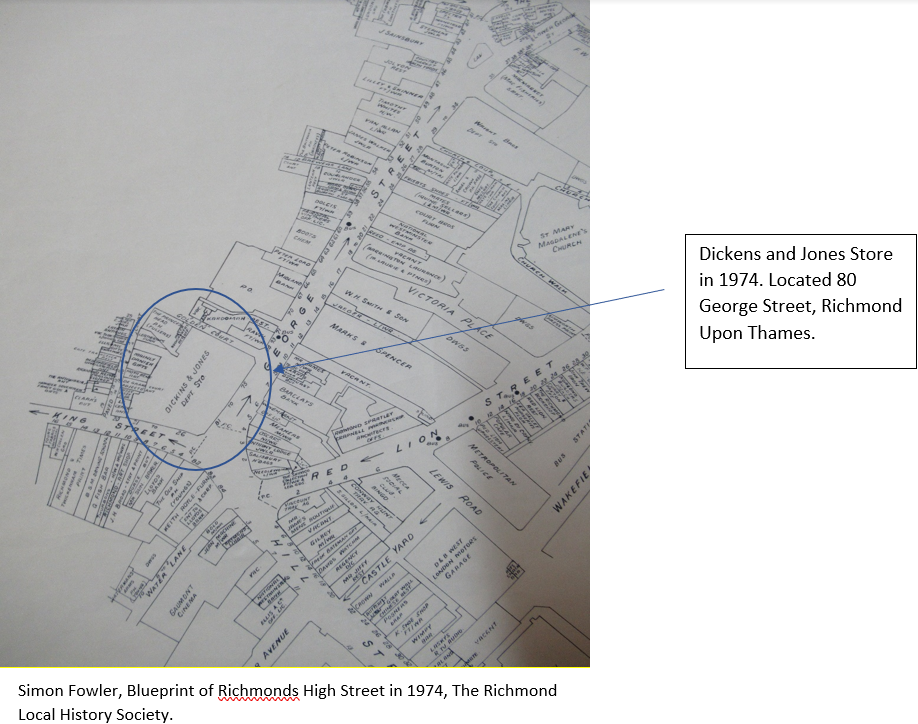
Maple and Co:
Maple and Co Ltd store was located at 19 The Quadrant (road) in Richmond. The fact that Maple and Co had a shop located on Richmond high street evokes the diversity of stores on the high street and how that can still be acknowledged about the high street today. Maple and Co were largely high-end furniture stores; along with the stores Dickens and Jones and Wright Brothers it is clear that Richmond high street was a wealthy high street in its entirety, an opinion that can also be derived from the high street in contemporary times.
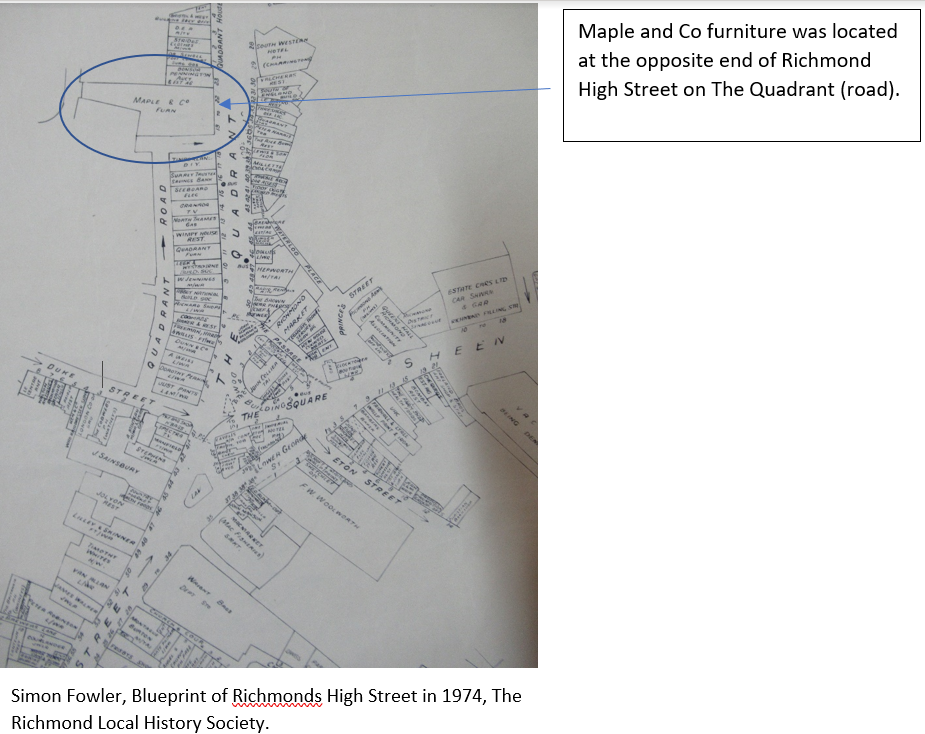
My research of Richmond Upon Thames high street has indicated to me the extent of the importance of local retail, and how the development of retail in a particular area can have drastic impacts on the local population. Richmond high street, and the opening of stores such as Wright Brothers and Dickens and Jones in a period where transport was not remotely as accessible as it is today, moulded Richmond into a bustling area with a thriving high street. The history of Richmonds retail is an interesting community history as it helps encapsulate the reasoning why Richmond high street is the way it is today, with an abundance of shops from all aspects of the retail market. Richmonds high street allowed Richmond as an area to develop from a place that was previously known as Shene in the borough of Kingston Upon Thames, to Richmond in its own borough of Richmond Upon Thames. This ultimately proving the importance retail had to the local History of Richmond as it helped put Richmond on the map.
Sources Used:
- Essen, Richard. The Archive Photographs Series Richmond And Kew. Gloucestershire: Chalford,1995.
- Marks and Spencers Company Archives ( https://marksintime.marksandspencer.com/home )
- Simon Fowler from The Richmond Local History Society ( https://www.richmondhistory.org.uk/ )
- The House of Fraser Archive ( https://www.housefraserarchive.ac.uk/ )
- The Victoria and Albert Museum archives ( https://www.vam.ac.uk/info/archives )

